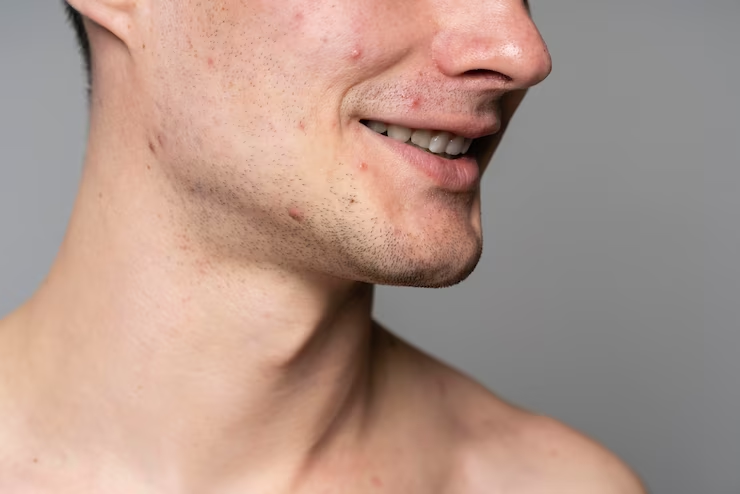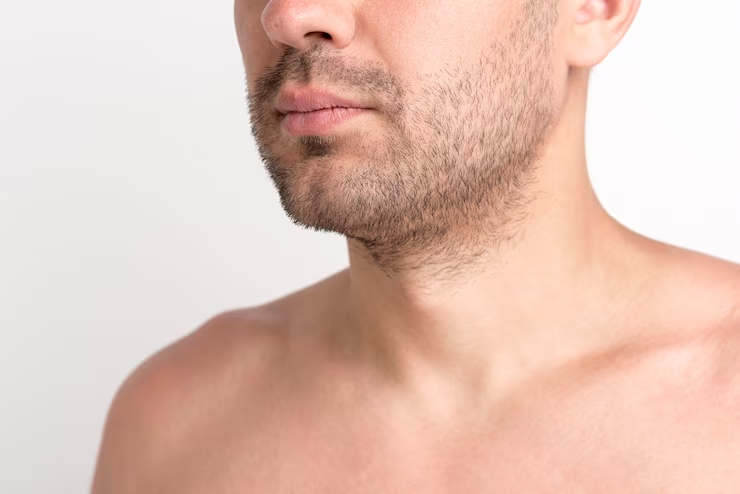
Dealing with pesky pimples can be frustrating, but luckily, pimple patches have become a popular and effective solution for spot treatment. These innovative patches help to draw out impurities, reduce inflammation, and promote faster healing.
However, your skincare journey continues after you've successfully removed the pimple patch. Taking proper care of your skin post-patch removal is crucial to ensure optimal healing, prevent further breakouts, and promote a healthy complexion.
In this article, we will walk you through essential steps and expert tips on what to do after removing a pimple patch, helping you nurture your skin and maintain a clear, glowing appearance. So, let's dive into the post-pimple patch care routine and unlock the secrets to healthy, blemish-free skin!
How Do Pimple Patches Work?
Pimple patches have become an effective tool for combating acne and promoting skin healing. These transparent adhesive patches are specifically designed to target individual pimples or blemishes. But how do pimple patches work?
Absorption of excess fluids
Pimple patches are typically made of hydrocolloid material with excellent absorbing properties. When applied to a pimple, the patch creates a protective barrier that helps absorb excess fluids such as oil, pus, and impurities from the affected area. This absorption process helps to reduce the size and inflammation of the pimple.
Protection from external factors
Pimple patches are a physical barrier between the pimple and external elements. They shield the blemish from dirt, bacteria, and environmental pollutants, preventing contamination and potential infection. Pimple patches aid healing and promote faster recovery by creating a clean and sterile environment.
Maintaining a moist environment
Pimple patches create a moist environment around the pimple. This controlled moisture level helps to keep the affected area hydrated, which is crucial for optimal healing. By maintaining the right moisture balance, pimple patches facilitate the regeneration of skin cells, minimize scarring, and promote a smoother complexion.
Preventing picking and touching
Pimple patches are a physical deterrent against picking or touching the pimple. The transparent adhesive patch covers the blemish, making it less accessible and reducing the temptation to squeeze or manipulate the pimple. This prevents further irritation, inflammation, and potential scarring from picking at the skin.
How To Remove the Pimple Patch
Once you've allowed the pimple patch to work its magic and it's time to remove it, it's important to do so with care to avoid any potential skin irritation or damage. Here's a step-by-step guide on how to remove a pimple patch:
Wash your hands:
Before touching your face, thoroughly wash your hands with a gentle soap or hand sanitizer. This step helps prevent transferring any dirt or bacteria to your skin.Locate the patch:
Identify the pimple patch you have applied to the affected area. Gently feel around the edges of the patch to determine its boundaries.Apply warm water or a damp cloth
: If the pimple patch is adhesive and difficult to remove, you can moisten it by applying warm water or gently pressing a damp cloth against it. This can help loosen the adhesive and make removal easier.Slowly peel off the patch:
Start by carefully peeling off one edge of the pimple patch. Take your time and proceed slowly to minimize any discomfort. Use your fingertips to hold the skin taut near the patch while peeling it off.Avoid pulling or tugging:
As you remove the pimple patch, avoid pulling or tugging on the skin. Be gentle and patient to prevent any potential irritation or damage.Dispose of the used patch:
Once you have successfully removed the used pimple patch, dispose of it hygienically. Roll it up or fold it to keep any residue contained.Remember, every pimple patch may have slightly different instructions for removal, so it's always a good idea to consult the specific guidelines provided by the manufacturer. Following these steps will help ensure a smooth and gentle removal process, setting the stage for the next crucial steps in your post-pimple patch care routine.
How To Cleanse the Skin After Removing Pimple Patch

After removing a used pimple patch, cleaning the skin is the next important step in your post-patch care routine. Cleansing helps remove any residue from the patch, excess oil, bacteria, and impurities that may have accumulated on the skin's surface. Here's why cleansing is essential and how to do it effectively:
Importance of cleansing
Cleansing the skin after removing a used pimple patch is crucial for several reasons. First, it helps to ensure that no adhesive residue or remnants of the patch are left on the skin, which could clog pores and lead to further breakouts.
Second, it helps to maintain overall skin hygiene by removing any dirt, bacteria, or pollutants that may have accumulated on the skin's surface. Finally, cleansing prepares the skin for the absorption of subsequent skincare products.
Choose a gentle cleanser
Opt for a gentle cleanser that suits your skin type. Look for products free of harsh ingredients, such as fragrances, sulfates, or alcohol, as these can strip the skin of its natural moisture and cause irritation. A gentle cleanser will effectively cleanse the skin without causing excessive dryness or sensitivity.
Cleanse with lukewarm water
Start by splashing your face with lukewarm water. Avoid hot water, which can strip away the skin's natural oils and cause dryness. The lukewarm water helps open the pores and facilitate a thorough cleanse.
Apply the cleanser
Use circular motions to gently massage a small amount of the cleanser onto your damp skin. Pay attention to the areas where the pimple patch was applied, ensuring that any remaining residue or adhesive is effectively removed. Be gentle and avoid scrubbing too harshly, which can irritate the skin.
Rinse thoroughly
Once you've massaged the cleanser onto your skin for a minute, rinse it thoroughly with lukewarm water. Remove all traces of the cleanser from your face, as any residue left behind can clog pores or cause dryness.
Pat dry
After cleansing, gently pat your skin dry with a clean, soft towel. Avoid rubbing or harshly towel-drying your face, as this can irritate. By following these steps, you'll effectively cleanse your skin after a pimple patch removal, ensuring a clean and fresh canvas for the subsequent steps in your skincare routine.
Why Cleansing Your Skin After Pimple Patch Removal is Important
Cleansing the skin after pimple patch removal is a crucial step that should be considered. Here's why cleansing holds significant importance in your post-pimple patch care routine:
Removing residue and adhesive
Pimple patches often contain adhesive properties to adhere to the skin and target the affected area securely. However, once you remove the patch, residue or adhesive may be left on the skin's surface.
Cleansing helps to effectively remove this residue, ensuring no remnants are left behind. Residual adhesive can clog pores, trap bacteria, and potentially lead to further breakouts or skin irritation.
Maintaining skin hygiene
Our skin accumulates various impurities throughout the day, such as dirt, sweat, bacteria, and environmental pollutants. Cleansing the skin after removing a pimple patch helps to eliminate these impurities, keeping the skin clean and promoting overall skin hygiene.
This step is particularly crucial as the targeted area may have been more prone to bacteria buildup due to the pimple.
Preparing for further skincare steps
Cleansing the skin creates a clean canvas and enhances the effectiveness of subsequent skincare products. When the skin is free from impurities and residue, other products, such as toners, serums, and moisturizers, penetrate better and deliver their benefits more effectively.
Preventing pore blockage
Pores can easily become clogged with debris, oil, and dead skin cells. Cleansing the skin post-patch removal helps prevent pore blockage, which is essential for maintaining clear and healthy skin. Keeping the pores clean minimizes the risk of developing new blemishes and acne breakouts.
Balancing the skin
Cleansing the skin pimple patch removal helps to restore the skin's natural balance. It removes excess oil, which can contribute to clogged pores and breakouts while maintaining the skin's necessary moisture levels. Opting for a gentle cleanser helps prevent stripping the skin of its natural oils, which can lead to dryness or increased oil production.
Apply a Soothing Toner or Serum
After removing a pimple patch, the next step in your post-patch care routine is to apply a soothing toner or serum. This step is essential for nurturing the skin, reducing redness, and promoting a healthy complexion.

Here's why applying a soothing toner or serum is beneficial and how to do it effectively:
Calming and balancing the skin
After removing a pimple patch, a soothing toner or serum can help calm and balance the skin. These products often contain aloe vera, chamomile, green tea extract, or centella asiatica, known for their soothing and anti-inflammatory properties. They can help reduce redness, irritation, and discomfort caused by the pimple or the patch removal process.
Hydrating and moisturizing
Some toners or serums are formulated with hydrating ingredients like hyaluronic acid or glycerin, which help replenish skin moisture. Hydration is essential to maintain a healthy skin barrier, promote healing, and prevent dryness or flakiness that may occur after using a pimple patch.
Enhancing the absorption of other skincare products
Applying a soothing toner or serum before other skincare products can help enhance their absorption and effectiveness. By creating a well-hydrated and balanced base, subsequent products like moisturizers or treatments can penetrate better into the skin and deliver their benefits more efficiently.
Gentle application
Pour a small amount onto a cotton pad or your fingertips to apply a soothing toner or serum. Gently pat or swipe the product onto your cleansed and dry face, focusing on the areas where the pimple patch was applied or any other areas of concern. Be gentle and avoid rubbing or tugging on the skin, which can irritate.
Follow product instructions
Different toners or serums may have specific instructions regarding application frequency or usage. It's important to read and follow the instructions provided by the product manufacturer to ensure optimal results.
Moisturize the Skin

After removing the patch and cleansing your skin, moisturization becomes essential to restore hydration, maintain a healthy skin barrier, and promote overall skin health. Here's why moisturizing is important and how to do it effectively:
Restoring moisture balance
Using a moisturizer after pimple patch removal helps replenish lost moisture and restore the skin's natural hydration balance. Pimple patches, especially those targeted at absorbing excess oil or treating active breakouts, can sometimes cause temporary dryness in the treated area. Moisturizing ensures your skin remains hydrated, preventing dry patches and promoting a smoother, more supple complexion.
Supporting skin barrier function
Moisturizers act as a protective barrier, sealing in moisture and preventing water loss from the skin. This is especially important after using a pimple patch, as the skin may be more vulnerable or compromised. A well-moisturized skin barrier helps strengthen and maintain the skin's integrity, enhancing its ability to defend against external irritants and pollutants.
Choosing the right moisturizer
Select a moisturizer suitable for your skin type. Opt for oil-free, non-comedogenic formulas that won't clog pores or contribute to further breakouts for oily or acne-prone skin. Dry or sensitive skin may benefit from richer, more emollient moisturizers. Look for ingredients like hyaluronic acid, ceramides, or natural oils, which help to hydrate and nourish the skin.
Application technique
After cleansing:
Apply a small moisturizer onto your fingertips and gently massage it onto your face using upward, circular motions.
Pay attention to the areas where the pimple patch was applied, ensuring thorough coverage.
Don't forget to extend the application to your neck and décolletage if desired.
Allow the moisturizer to fully absorb before proceeding with other skincare or makeup products.
Day and night moisturization
It's important to moisturize both in the morning and at night. During the day, choose a moisturizer with added SPF to protect your skin from harmful UV rays. In the evening, opt for a nourishing moisturizer that can work overnight to repair and rejuvenate the skin.
Protect and Hydrate

Knowing what to do after removing a pimple patch is crucial, and one of the key steps is to protect and hydrate your skin. Post-patch care measures are essential for maintaining skin health and preventing further issues.
By incorporating hydration and protection into your skincare routine, you can effectively care for your skin after removing a pimple patch. Let's explore why protecting and hydrating are important and how to implement these steps effectively.
Hydration for optimal skin recovery
After removing a pimple patch, hydrating your skin is essential. The patch removal process and any treatments can leave your skin feeling dry or dehydrated. Hydration helps restore moisture levels, promoting a supple, smooth complexion. It also reduces the risk of irritation, redness, and flakiness post-patch removal.
Protection from external factors
Shielding your skin from external factors is vital after removing a pimple patch. UV rays, pollution, and harsh weather conditions can all impact skin health. Applying a protective barrier helps safeguard your skin from these harmful elements. Look for moisturizers with SPF to provide sun protection, and consider products with antioxidants to combat free radicals and minimize damage.
Choosing appropriate products
Selecting the right skincare products is crucial for effective post-patch care. Opt for moisturizers suitable for your skin type, with hydrating ingredients such as hyaluronic acid or natural oils. To ensure protection, use a broad-spectrum sunscreen with an appropriate SPF rating. Look for products enriched with antioxidants like vitamin C or green tea extract to enhance your skin's defense against external stressors.
Proper application techniques
Once you've cleansed your skin, apply moisturizer evenly to your face and neck, paying attention to the areas where the pimple patch was removed. Gently massage the product in upward motions to aid absorption. When applying sunscreen, follow the recommended amount and reapply as needed throughout the day for ongoing protection.
Consistency is key
Consistently incorporating these steps into your skincare routine is crucial for optimal results. Make protecting and hydrating your skin a daily habit. Apply moisturizer and sunscreen in the morning as part of your routine, and moisturize again at night to provide overnight hydration and nourishment.
Avoid Touching or Picking
Understanding what to do after removing a pimple patch includes an important step: avoiding touching or picking at the treated area. While inspecting or extracting any remaining blemishes can be tempting, doing so can lead to further irritation, inflammation, and potential scarring.
Here's why it's crucial to refrain from touching or picking your skin and how to resist the urge effectively:
Preventing infection and further breakouts
When you touch or pick at your skin, you introduce bacteria from your hands and nails, increasing the risk of infection. Additionally, squeezing or picking at healing blemishes can disrupt the delicate healing process, leading to more inflammation and potentially causing new breakouts to form. Maintaining a clean and hands-off approach is essential to prevent complications and promote proper healing.
Minimizing scarring and hyperpigmentation
Picking at your skin can result in scarring and hyperpigmentation, leaving behind long-lasting marks. The trauma caused by picking disrupts the natural healing process, forming acne scars and dark spots. Avoiding touching or picking gives your skin a chance to heal properly, minimizing the risk of scarring and promoting a smoother complexion.
Practicing alternative coping mechanisms
Touching or picking the skin often results from anxiety, stress, or a compulsive habit. Recognizing these triggers and developing alternative coping mechanisms to avoid such behaviors is important. Find healthy outlets for stress relief, such as deep breathing exercises, meditation, or hobbies that distract your mind from the urge to touch or pick your skin.
Creating physical barriers
You can use strategies like wearing clean gloves or applying hydrocolloid patches over the treated area to act as a protective barrier and discourage picking. By physically preventing access to your skin, you decrease the likelihood of engaging in detrimental habits.
Seeking professional help if needed
If you find it challenging to break the habit of touching or picking your skin, consider seeking guidance from a dermatologist or mental health professional. They can provide personalized advice, recommend strategies to address underlying triggers and suggest suitable treatments to help you manage the urge effectively.
To wrap it up…
Knowing what to do after removing a pimple patch is vital for promoting healthy, radiant skin. Remember to cleanse the skin, apply a soothing toner or serum, moisturize, protect and hydrate, and avoid touching or picking. By following these essential steps, you can maximize the effectiveness of your pimple patch treatment and enhance the healing process.











